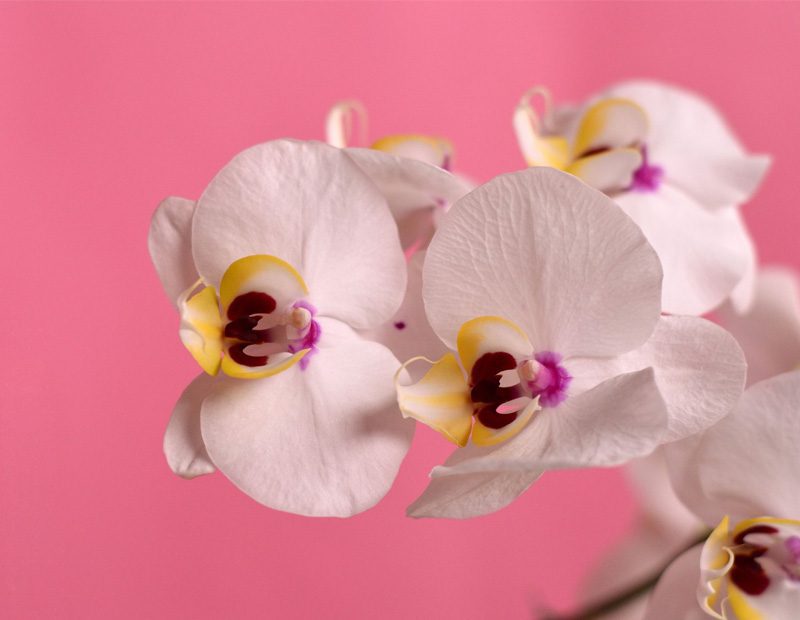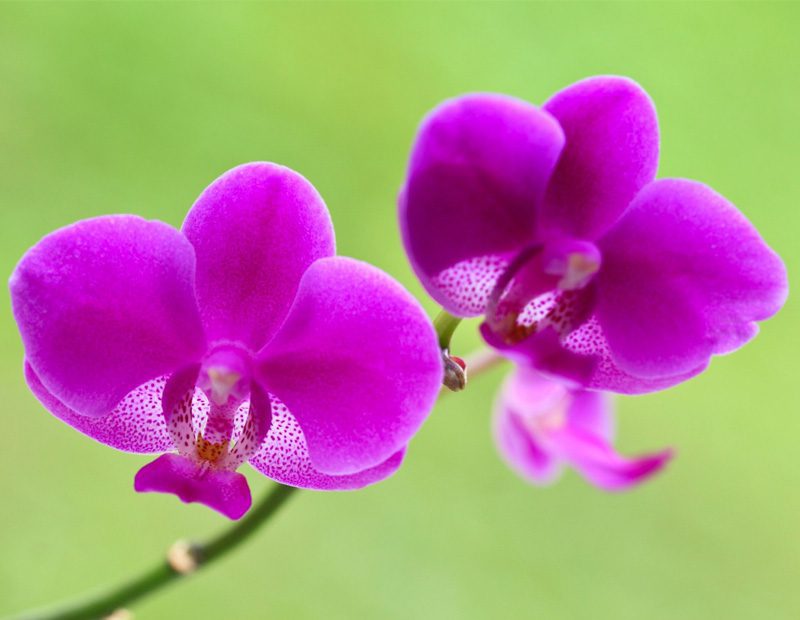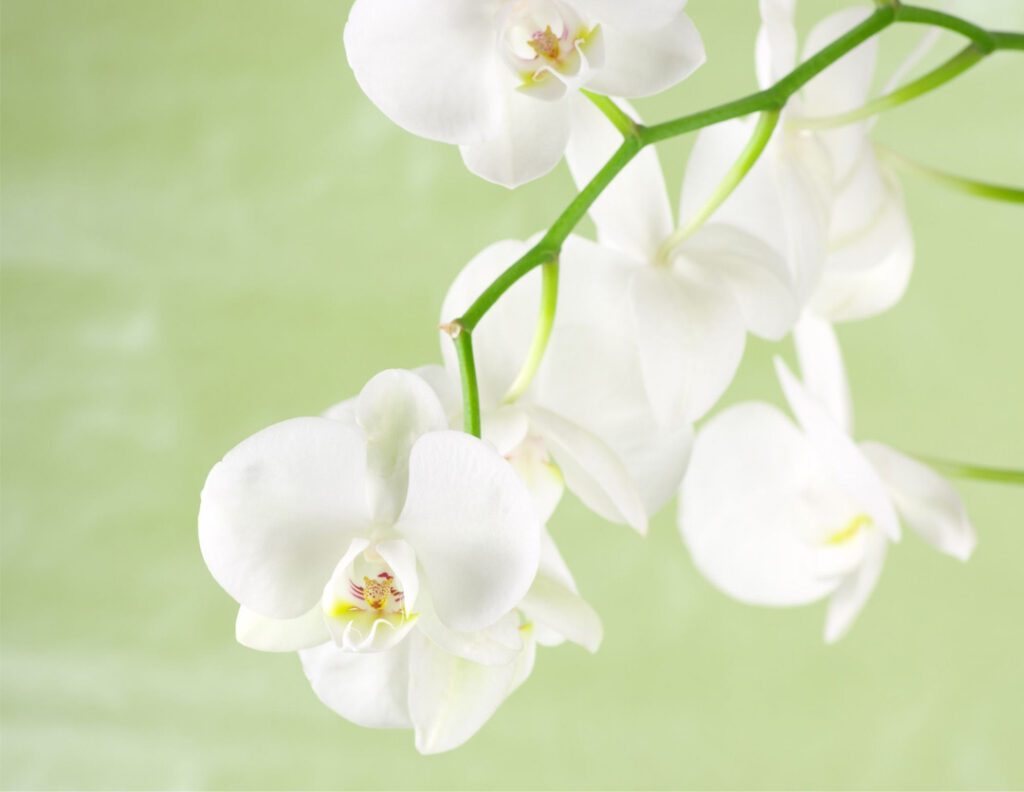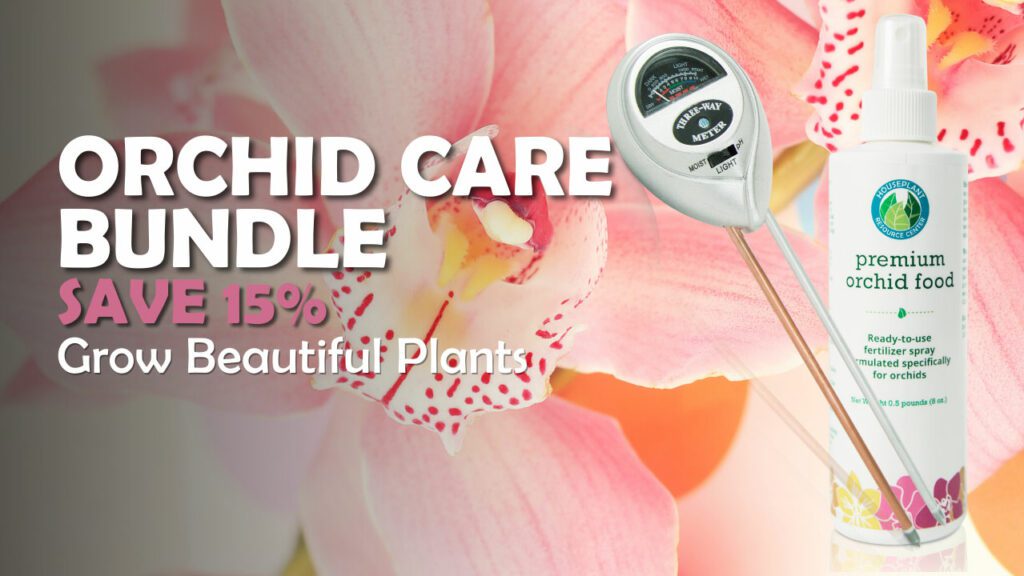These 4 easy-to-follow tips take the guesswork out of orchid care so you can grow your orchid like a pro.
Orchids have a reputation for being difficult to grow. But, truly, with the right potting mix, fertilizer, water, and light, your orchid will thrive under your care.
The most common mistake you can make as an orchid grower is to treat your orchid like any other houseplant. Other houseplants may be able to withstand harsh conditions or may be forgiving if you have inconsistent plant care routines.
While orchids aren’t particularly hard to care for, they do require a careful set of practices to live long, hearty lives and produce their unique blooms.
Below, we’ve compiled four orchid care tips so you can care for your orchid just like a professional grower. With these four simple tips, you’ll be able to enjoy your orchids for years to come.

Tip #1: For the best orchid care don’t over-water.
One of the basic steps to mastering orchid care is learning to provide your plant with the right amount of water. Over-watering is the most common way to decay your orchid’s root system and accidentally kill your plant.
Orchids have delicate and complex root networks that are prone to root rot in wet conditions. When the root system suffers damage, the orchid can no longer absorb nutrients. Without a healthy root system, your orchid will droop, wilt, and eventually die.
The best way to gauge if your orchid needs water is to stick your finger an inch into the potting mix. If the mix feels wet (or even damp), your orchid doesn’t need water. If the potting mix is thoroughly dry, you should give your orchid a hearty drink.
When in doubt, always air on the side of under-watering, since this won’t kill your orchid as easily as over-watering will.
Professional Tip: Water your orchid in the morning. This will allow the growing mix to dry quickly and thoroughly since daytime temperatures are generally warmer than nighttime temperatures.

Tip #2: Create humid conditions for your orchid.
Your orchid doesn’t like to sit in wet growing mix. But it does like humidity. Depending on your orchid species, its natural habitat is likely a tropical or subtropical setting. (Though orchid species are also found in semi-desert regions, coastal regions, and tundra environments.)
Orchids can be successfully grown indoors, though you likely won’t have natural humid conditions in your house. But don’t let your cool, dry home conditions deter you. You can easily create humid conditions for your orchid so your plant is as happy as if it were blooming in the jungle.
To create humid conditions for your orchid, place a humidity tray beneath your plant. A humidity tray is a rimmed dish that allows water to collect beneath your orchid. It’s separate from your orchid pot to ensure the water doesn’t seep into the potting mix through the pot’s drainage holes.
You can buy a humidity tray or make one yourself. All you’ll need is a pan or saucer and some pebbles. Fill the pan with the pebbles and place your orchid pot on top.
Keep your humidity tray filled with water. When the water evaporates, your orchid will bask in the humid air.
Professional Tip: If you have more than one orchid plant, try placing them close together. This will help increase the humid conditions between plants.

Tip #3: Make sure your orchid is getting optimal light.
Inconsistent and inadequate light conditions are probably the number-one factor preventing your orchid from blooming. If you’re wondering why your orchid isn’t producing new blooms, you’ll want to investigate the light conditions necessary for your orchid species.
Orchids that require high light conditions will enjoy spending summers outdoors. But keep in mind that many orchid species grow in dappled light conditions, so your orchid likely can’t withstand the all-day-long direct sunlight required to grow other common plants like tomatoes. If your orchid is grown indoors, placing your plant behind a sheer curtain in a west- or south-facing window is best.
Orchids that enjoy low light conditions will do well in north- or east-facing windows. You can set your plant a few feet away from the window to ensure it’s not exposed to direct sunlight.
Keep in mind that a healthy plant will have strong, light- or medium-green leaves. Orchids with deep green leaves are likely in need of more light. Orchids with bleached or reddish leaves are likely receiving too much light.
Professional Tip: If you make changes to your orchid’s light conditions, do so gradually. Orchids can easily burn if exposed to too much light, so the more cautious you are, the better.

Tip #4: Use the right potting mix for the best orchid care.
Depending on its species, your orchid may need a specific potting mix to thrive. It’s important to keep in mind that not all orchids grow in dirt. In tropical climates, orchids grow clinging to the bark on trees.
Typically, an orchid’s root system needs access to air and sunlight. Thick dirt or traditional soil can suffocate the delicate root systems of many orchid species, which will eventually suffocate your plant.
You can buy commercial orchid potting mix or create your own.
If you opt to create your own potting mix, a good starting point is a mixture of fir bark, peat moss, sphagnum moss, stones, or rock wool.
Of course, the ideal potting mix for your plant will largely depend on its species, but a general rule of thumb is that orchid potting mix should allow excellent drainage and good airflow to the orchid’s roots.
Professional Tip: To get the most out of your growing mix, consider using a reliable orchid fertilizer. With the right potting mix and the right orchid food, your orchids are sure to deliver vibrant, beautiful blooms year after year.
If you’re looking for the perfect orchid fertilizer to grow beautiful orchids with ease, try our one-of-a-kind Premium Orchid Food. Our unique formula is a ready-to-use spray that won’t harm your orchid or damage its delicate root system—a common problem with other fertilizers.
Simply spray the Orchid Food on your orchid’s leaves, roots, and potting mix every time you water. Then sit back and watch your plant bloom.
Click here to buy our Premium Orchid Food and start nourishing your orchid today.



